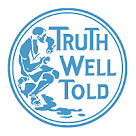Marmot’s super bowl spot.
(This post originaly appeared February 10, 2016, then was taken down die to a hack.)
I love the Marmot brand. I ski in Marmot, I sleep in Marmot, I do outdoors stuff in Marmot. I want to own more of it. The gear is well-designed, engineered-to-the-max and good looking. They’ve done a wonderful job with branding and marketing. (I have tend pole that bent, and it doesn’t even bother me. Why? Because Marmot is like family.)
Then, before the Super Bowl, I saw a Marmot teaser ad campaign and knew I wasn’t going to like. Super Sunday I saw the real thing. It’s a Goodby, Silverstein and Partners spot, focusing around, you guessed it, a marmot. Were this toilet tissue or insurance, maybe. But cuddly talking Marmot? Oy. I can only imagine the 2 other campaigns the agency pitched to beat this one. It should never have been presented. Lazy ass trade craft. It is so unfitting of the brand.
I can just imagine the engineers in the goose down research center, breathing feathers all day, watching the game on TV with their friends. “A talking marmot, really?” No wonder advertising and marketing people have a bad name in engineering focused companies.
As a brand strategy guy and Marmot fan it was a sad day. Even if the spot tested off the charts with the teens and tweens – the next generation of buyers – it was a brand mistake. A 5 million dollar mistake. And that’s a lot of feathers.
Peace.




